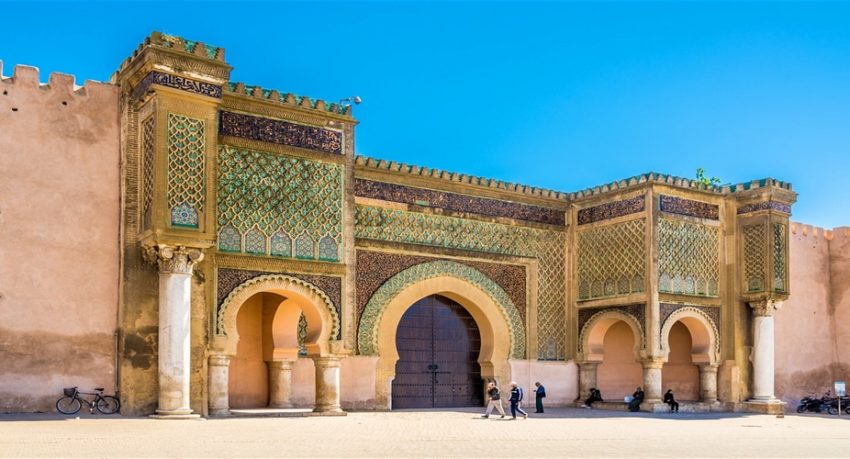Located near Fes, Meknes is a fusion of color, culture, and history. Meknes, easily accessible via train, is a city that has a multifaceted appeal. Many visitors concentrating only on their particular interests, tend to concentrate on some aspects of the city while abandoning the others. However, in order to fully experience Meknes for all that it is worth, it is important to incorporate all facets of the city throughout your visit. Once you’ve embarked on your tour of Meknes, explore the first aspect of the city-it’s vibrant history.
Whether you’re a history nut or a history-hater, Meknes’ story will entice you. Throughout your journey, you should try to recognize the historical importance of Meknes as a city. Understanding this will enhance your experience with the city as a whole. History tells us of an ancient time when Meknes was inhabited by a Berber tribe named Miknasa (hence the name “Meknes”). The Berbers are a unique ethnic group that speaks its own language called Berber. Because of its cultural uniqueness, the Berbers presence in Meknes truly differentiates it from other parts of the country. Architectural remnants of this era and centuries after including the Grand Mosque and the Nejjarine Mosque. Both are must-see sites.
Between the years of 1672 and 1727, Meknes became the capital of Morocco and Moulay Ismail was the king. Much of the city’s architecture today reflects this fact. Most of the large construction projects in the city began during this time. These projects include very visible sections of the city’s outlying area today, such as monumental gates and large mosques. There are remnants of this historical period throughout the city, including the Dar El Makhzen palace, which was Moulay Ismail’s official palace.
During his reign, Meknes became known as the “Versailles of Morocco” due to the prodigal construction. The Bab Mansour gate, with beautiful columns, which now serves as an arts and crafts gallery, was also constructed during Moulay Ismail’s reign but was finalized after his death. To understand Moulay Ismail’s true importance, it is advisable to visit his Mausoleum as well-the shockingly beautiful colors of the building highlight his legacy.
Once you’ve grown tired of history, let loose and experience the unique local culture, which can surprisingly differ from other areas of the country. The central medina and souk often feature performers of all types. After sitting at a cafe, explore the labyrinth of the insides of the medina. The calmness of Meknes allows for relaxation while you take in the sights. Places such as Bou Inania Medersa even allow you to meditate while you gaze at the intricate tile work and art.
Meknes is a city less traveled and is well worth the visit. Because it is less touristy, however, it is important to prepare yourself with historical context and information before you go. After understanding the incredible importance of Meknes, the sites seem to speak more to visitors. Listen to their stories, and enjoy an enriching trip to Meknes in Morocco.
